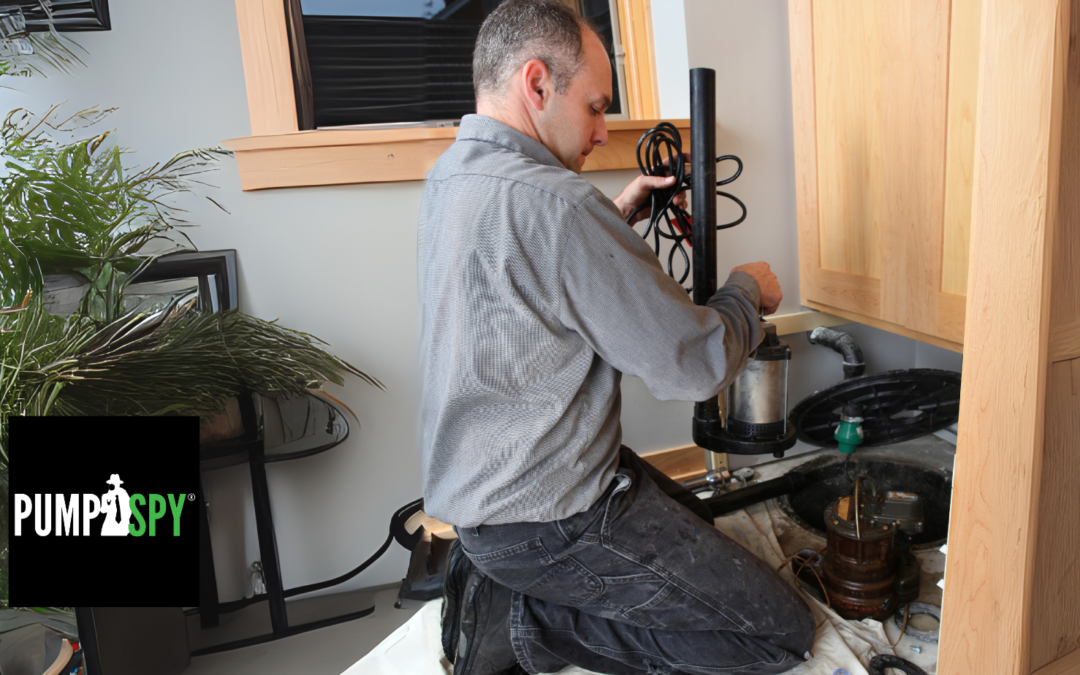A properly functioning sump pump is essential for preventing basement flooding, but like any mechanical system, it can develop issues over time. Identifying these problems early and addressing them promptly can prevent costly damage. Here are some of the most common sump pump issues and how to fix them.
1. Pump Not Turning On
If your sump pump isn’t turning on when needed, there are a few things to check:
- Power Supply – Ensure the pump is plugged in and the circuit breaker hasn’t tripped.
- Float Switch Issues – The float switch, which activates the pump, may be stuck. Move it manually to see if the pump starts.
- PumpSpy Battery Backup System – If using a backup system, check that the battery is charged and functioning correctly. The PumpSpy WiFi Battery Backup System will alert you to power issues in real time.
- Clogged Intake – Debris blocking the intake screen can prevent the pump from running. Clean out any obstructions to restore functionality.
2. Continuous Running Pump
A sump pump that runs non-stop can wear out quickly and waste energy. Common causes include:
- Stuck Float Switch – If the float switch is stuck in the “on” position, the pump will continue to run.
- Improper Sizing – If the sump pump is too small for the volume of water, it may need to run continuously to keep up. Consider upgrading to a higher-capacity pump.
- Check Valve Failure – The check valve prevents water from flowing back into the pit after being pumped out. A broken valve can cause the pump to run repeatedly.
3. Strange Noises
Unusual sounds from your sump pump can indicate a problem:
- Loud Grinding or Rattling – This could be due to a damaged impeller or motor. Turn off the pump and inspect the impeller for debris or wear.
- Banging or Vibrations – The discharge pipe may be loose, causing it to rattle against walls or the basin. Secure the piping with brackets to minimize movement.
- Humming but Not Pumping – If your sump pump hums but doesn’t move water, the motor could be running without properly engaging. This may indicate a blocked intake, a jammed impeller, or a failing motor.
4. Water Not Draining Properly
If your sump pump turns on but isn’t effectively removing water, check for these issues:
- Clogged Discharge Line – The discharge pipe may be blocked by debris or frozen in cold weather. Clear any obstructions to allow proper water flow.
- Faulty Check Valve – A failing check valve can cause water to drain back into the sump pit, forcing the pump to work harder.
5. Foul Odors from the Sump Pit
If you notice unpleasant smells coming from your sump pump, it could be due to stagnant water or bacteria buildup:
- Flush the System – Clean the sump pit with a mixture of water and vinegar or bleach to remove odor-causing bacteria.
- Check for a Dry Pit – If water evaporates completely, sewer gases can rise into your home. Pouring water into the pit occasionally helps maintain a water seal.
Keep Your Sump Pump Running Smoothly with PumpSpy
Regular maintenance and real-time monitoring can help you avoid these common sump pump problems. With PumpSpy’s WiFi-enabled smart pumps and battery backup systems, you can receive alerts about potential issues before they lead to serious damage.

